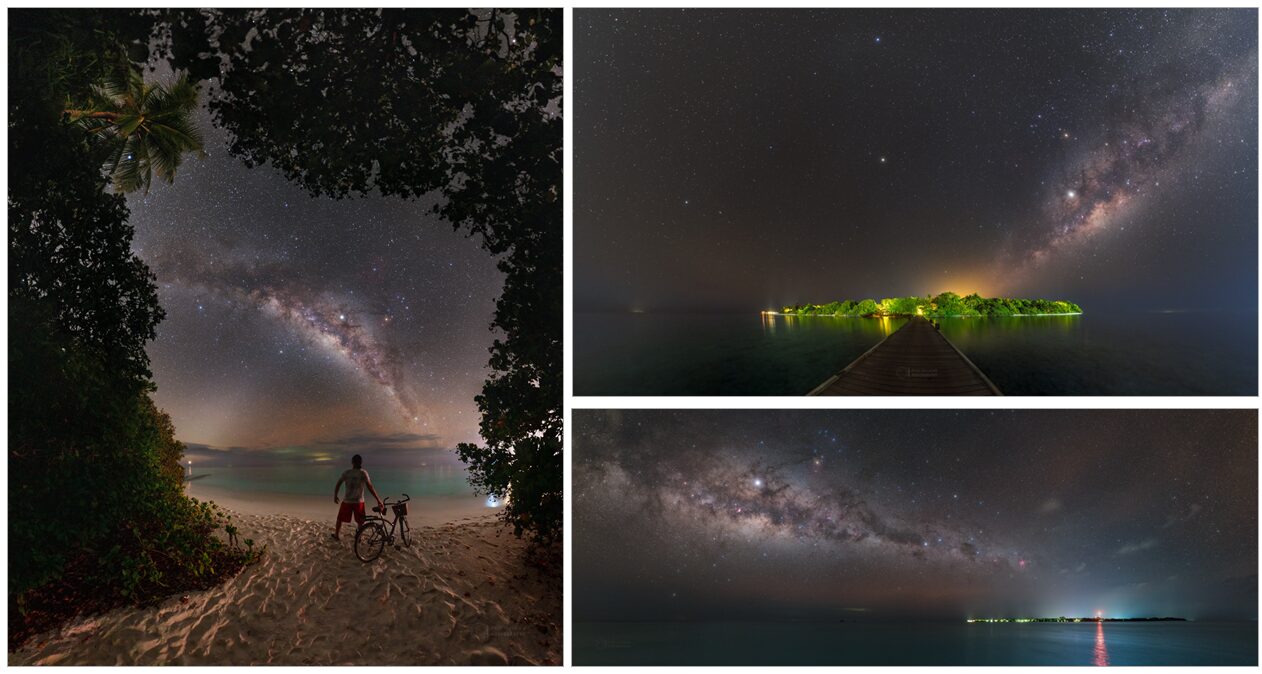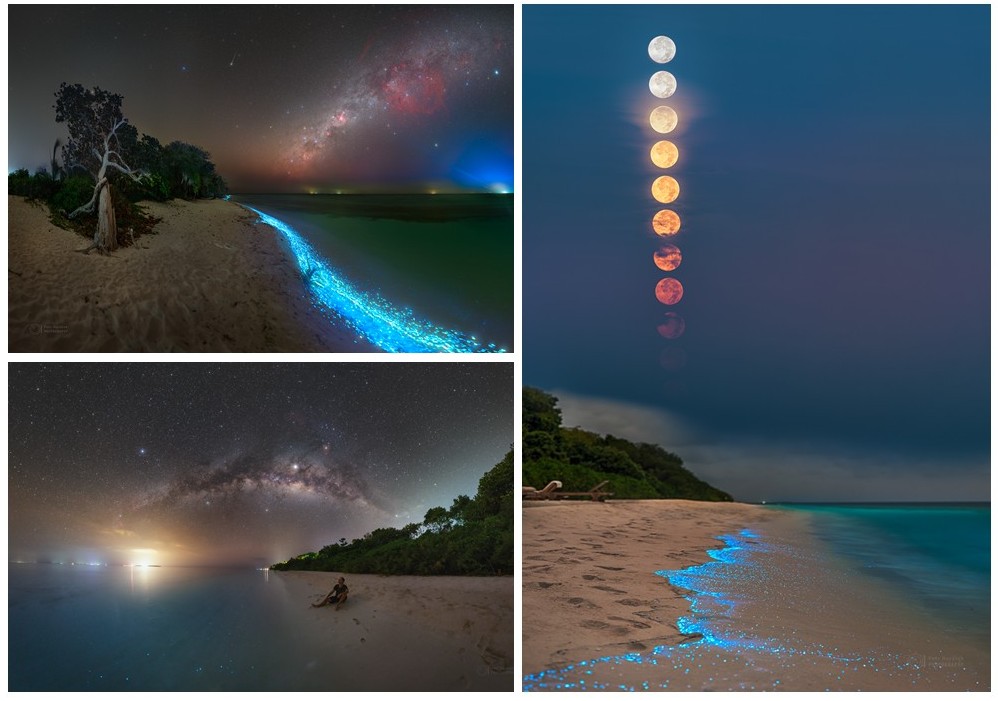The first pearl of the starry sky he will talk about is the Milky Way.
The Milky way has been known to humans since time immemorial as a hazy silvery band stretching across the entire sky. That time, people did not know its real origin, so different cultures invented different legends. According to one of them, it was a sacred river for the souls of the dead, while others saw it as a heavenly continuation of the earthly cycle of water. According to Greek legend, it was a milk of the goddess Hera spilled across the sky during the dramatic breastfeeding of the little strongman Heracles. We have only known for about four centuries that it is a projection of many distant stars’ lights from our Galaxy, our cosmic island, into the starry sky. Unfortunately, we are depriving ourselves more and more of this beauty through useless and harmful light pollution. Can we see the Milky Way from the Maldives? And if so, when is the best season?
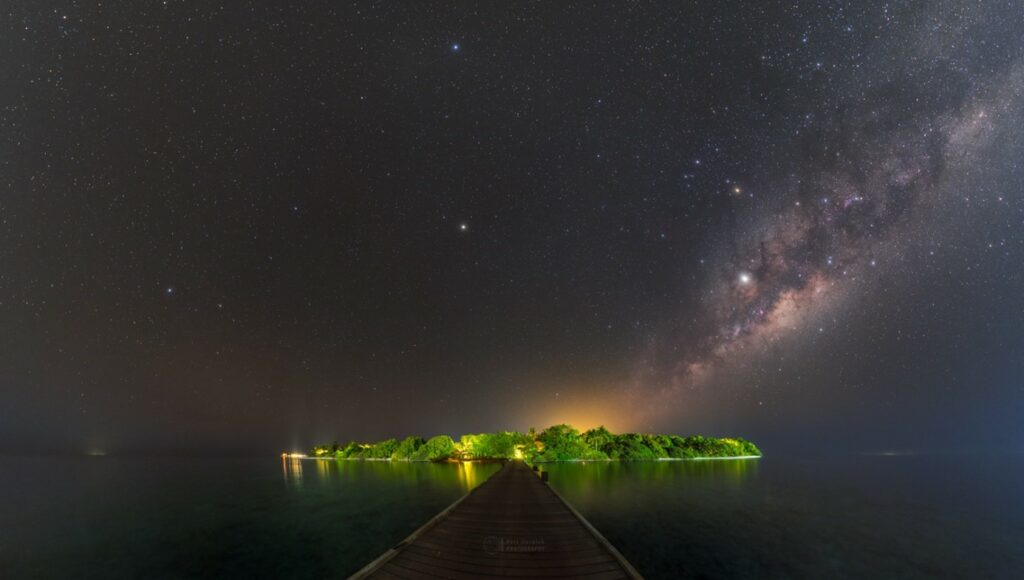
Photo by: Petr Horálek.
The Maldivian atolls are distributed mostly slightly north of the equator, thanks to which residents and visitors of this exotic country are offered a view of the entire starry sky throughout the year. While in season, especially from November to January, the northern winter sky dominates the sky (with bright stars around the majestic constellation of Orion), between the end of February and the mid of October they can enjoy a truly breathtaking view of the central Milky Way. Surrounded by the large and beautiful constellation Scorpius, the view into the center of our Galaxy is particularly noticeable in August and September, when it reaches very high to the headboard already after sunset and can be observed long into the night, when it sets behind the horizon of the Indian Ocean. In October, it is only visible below the western horizon, and if the sky is clear and you are far from sources of nocturnal light, you can even see its reflection on the ocean surface.
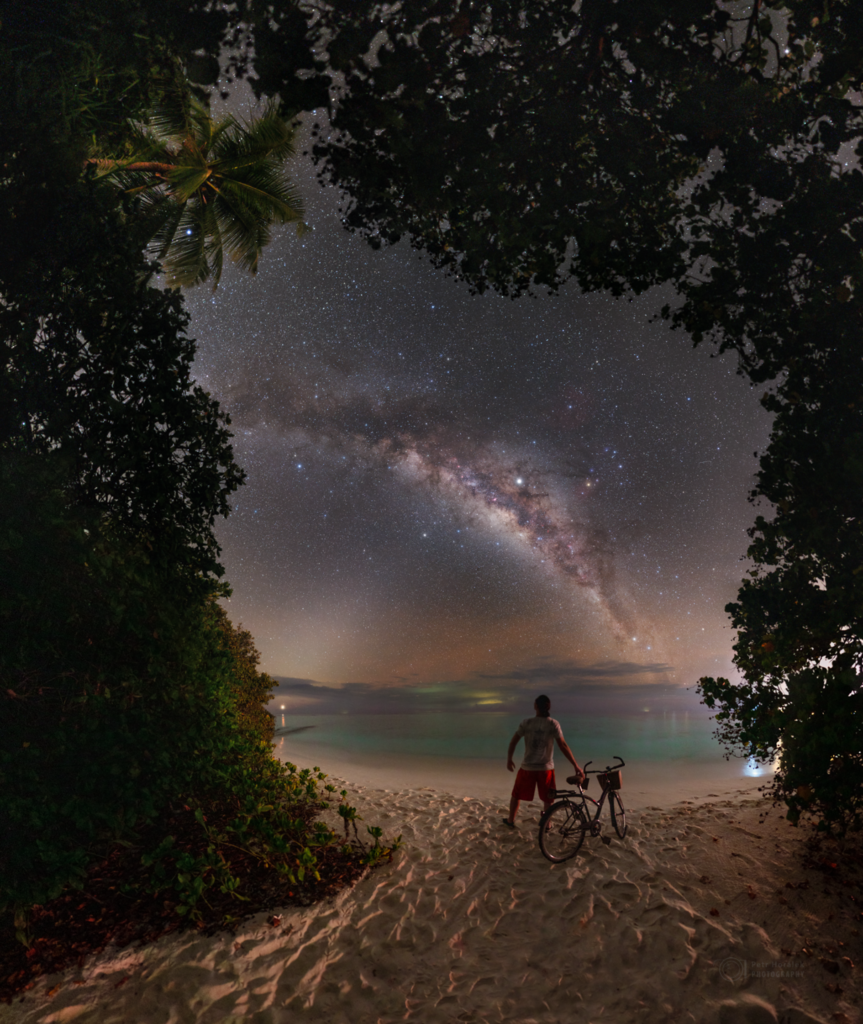
Photo by: Petr Horálek.
And what exactly is the Milky Way from an astronomy point of view? It is the Galaxy, a kind of rotating vortex made up of roughly 200 billion stars, one of which is our Sun. It lies about 2/3 of the distance from the center of the Galaxy to its edge, and because the vortex is flat, we look at our Galaxy from the side and see it as a nebulous band. All the stars in the sky are part of our Galaxy (other galaxies are visible as very faint nebulae in the sky as well, mostly by telescopes). While we see the closest stars of the Galaxy individually as bright stars in the sky, the farther they are, the harder it is for us to distinguish them and they “merge” into that nebulous band. The closest star to the Sun is 4 light years away – Proxima in the constellation Centaurus (it can be observed with binoculars from the Maldives especially in February and March). This means that the light from it travels to us for four years. However, our Galaxy is really huge, it is 105 thousand light years across. So, it is quite possible that thousands of light-years away, somewhere at the other end of the Galaxy, there may be a planet orbiting a star with an intelligent civilization looking into the Milky Way towards us. Unfortunately, the vast distances between the stars in our Galaxy are the reason why it is difficult to find such intelligent life.
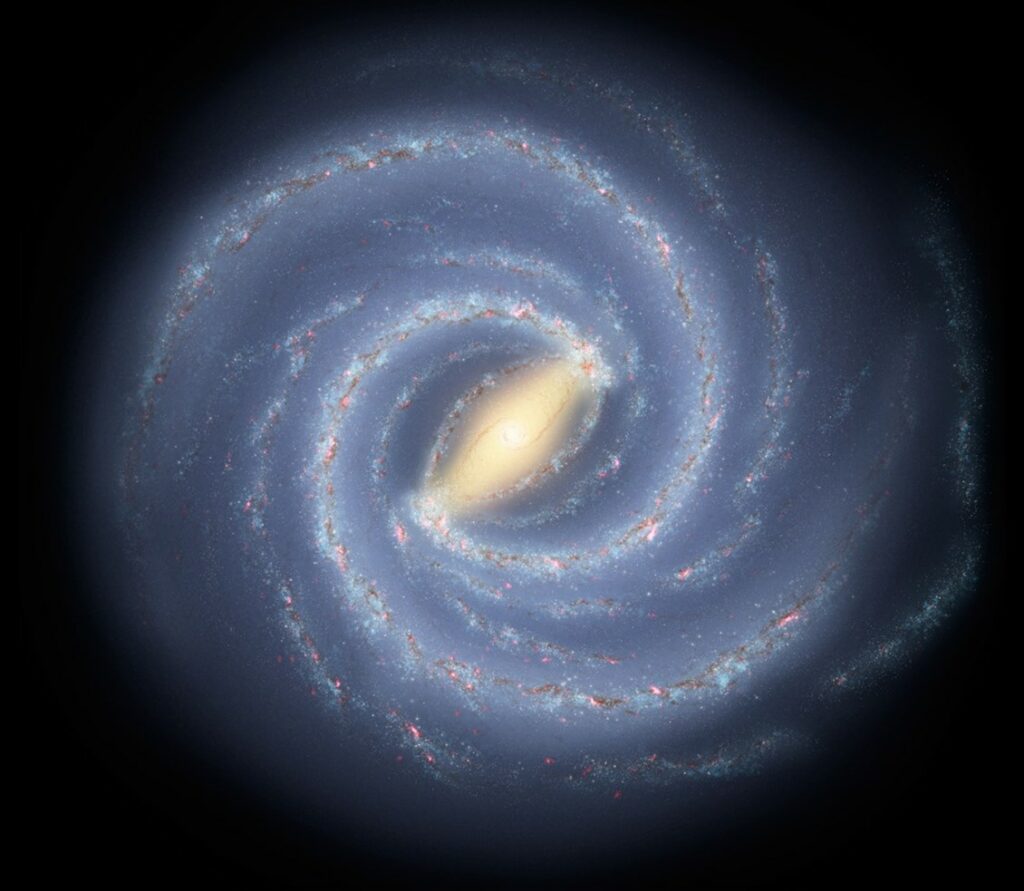
This view is not common for every person on Earth because the Milky Way’s visibility depends on the observer’s latitude, which is why the Maldives is so well placed to view our galactic island. But to observe it, you need to find a place far from sources of light pollution caused by, i.e. halogen lamps, glowing ships and illuminated resorts, ports or cities. The best view of the Milky Way is on a beach in the shade of any artificial lights. Unfortunately, not all Maldivian islands are doing so well; on many of them, they use light where it is not needed (lights shine with incredible intensity up into the sky, bright ball lights are often used instead of directional lights that would only shine down to the ground). One of the islands where you can still see the beauty of the night sky is, for example, Thoddoo, especially its southeastern part. If the Maldivian government and the owners of the accommodation centres would come up with a plan to effectively reduce light pollution by installing the right and nature-friendly lamps (which is very well described by International Dark Sky Association), it would also become a truly worldly unique paradise for enjoying the gems of the night sky!

Something about the author and photographer of this post
PETR HORÁLEK was born in 1986 in Pardubice, Czech Republic. He studied Theoretical Physics and Astrophysics at Masaryk University Brno (graduated in 2011) and Theoretical Physics in Silesian University of Opava (graduated in 2022). He worked briefly as an observer of fireballs at the Department for Interplanetary Matter of the Astronomical Institute of Academy of Sciences of Czech Republic, now he is astrophotographer and popularizer of astronomy, awarded also by NASA. From 2011, he fell in love with astrophotography and decided to take a year-long trip around the world to improve his skills in that field. As citizen of a light-polluted Czech Republic, he travels the world for naturally dark places in show people in polluted cities what are they missing (not only) above their heads. A long route through the Canary Islands, Australia, New Zealand, the Cook Islands and South Africa brought him in the end into the heart of the Atacama Desert at ESO’s La Silla and Paranal Observatory in 2015 (when he became the ESO Photo Ambassador), later in NOIRLab observatories (as NOIRLab Photo Envoy) and, of course, the Maldivean Islands in 2019.
See more photos by Petr Horalek on his websites:
